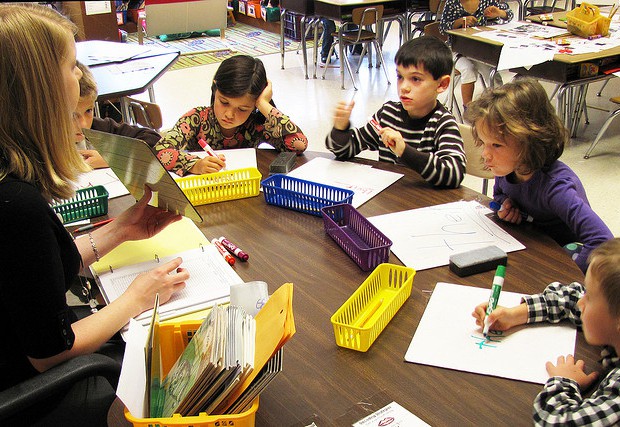It is often said by teachers that up until the second grade, students are “learning to read” and from second grade on, they are “reading to learn”. By second grade students should be fluent, independent readers so that they can keep up with the demands of future workloads. It is a teacher’s biggest responsibility to ensure that their students are reading and comprehending fluently, so that they are prepared for the years ahead.
As many teachers know, some kids, for a variety of reasons, simply have a hard time learning to read. Teachers often discuss what can be done to get these kids reading. What follows are some tricks to help struggling readers, from kindergarten through fifth grade improve their skills.
-
Telephone Trick
One of the first skills early readers must master is recognizing letters and knowing the sounds those letters make. Some teachers make a little, curved, telephone-like tool out of small pieces of PVC pipe that students can hold like a phone and speak into. As they make sounds, they hear their voices right in their own ears! Very effective and fun!
-
Stand Up
For students who are struggling to blend short words, use large alphabet cards to spell several words. (POT, SIP, CUP) etc. Put the words on the floor, and allow the students to get physical by standing in front of the words, and blending the sounds as they move their bodies along with the words. This is a great way to get young kids on their feet and moving while they learn.
-
Book Series
There are hundreds of book series written for elementary school students of all levels and interests. Finding just the right series, can kick off a wonderful relationship between reluctant reader and author! There is no question about what book they should read next; the characters are familiar, and the story just continues.
-
Study Buddies
It can be very satisfying for older students to read to younger children, so if possible, find a kindergarten class to buddy up with, so your students can feel confident, having someone looking up to them for being able to read! Since their audience is younger students, the readers can get away with reading more beginning level books. Ideally the reader will have access to the book beforehand so he or she can practice.
-
Book Clubs
Reading groups can be a great way to get everyone in the class reading at their own level. Groups are sorted according to reading level, and each group has a different book. Each student has a task, (one student must come up with 3 questions to ask about the chapter, another student writes down any words that are unfamiliar to the group, etc.). Parents might help, and the teacher can spend time reading with each of the various groups.
-
Reading Aloud
It can be terrifying for a reluctant reader to be called on to read in front the class. Rather than avoiding calling on these students, try to prepare ahead of time what you will ask the struggling readers to read, so they can prepare ahead of time. This will build confidence and help them to feel included.
These are a few great tips that many teachers have used to inspire reluctant readers to move forward. The best way to become a better reader, is to read! It’s also important to remember that teachers can inspire their students to be book lovers by sharing their own experiences about reading. If teachers read to their classes with enthusiasm, sharing some of their favorite books and telling the students why they love the books, students will remember those experiences long after the school year is over. Students should see their teachers moved by what they are reading, or laughing when books are funny! One of the great joys of being a teacher is the opportunity to share a love of literature, and inspire a life-long love of reading!
